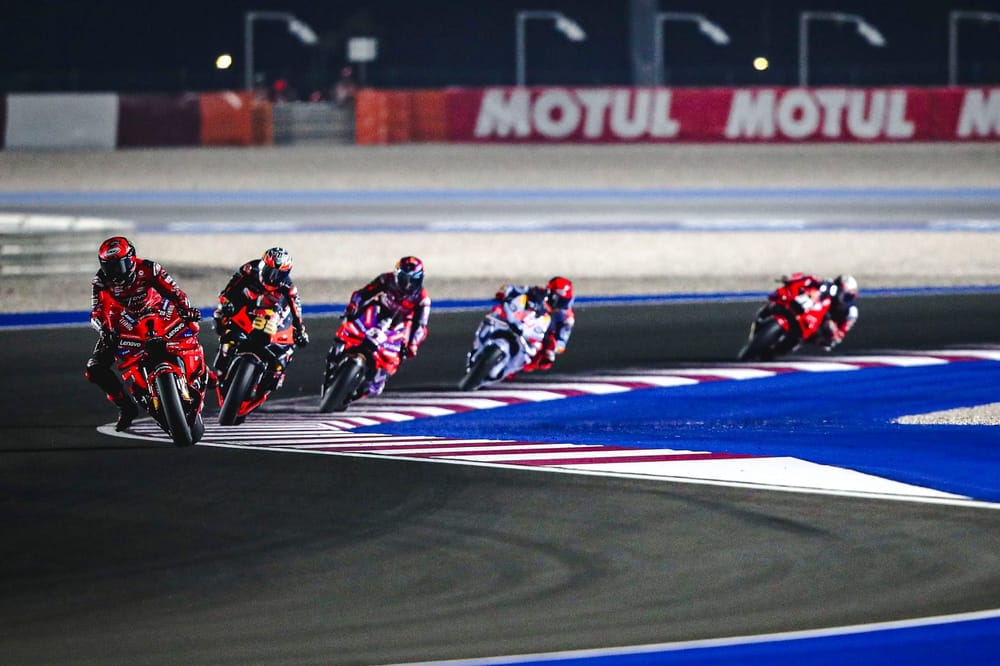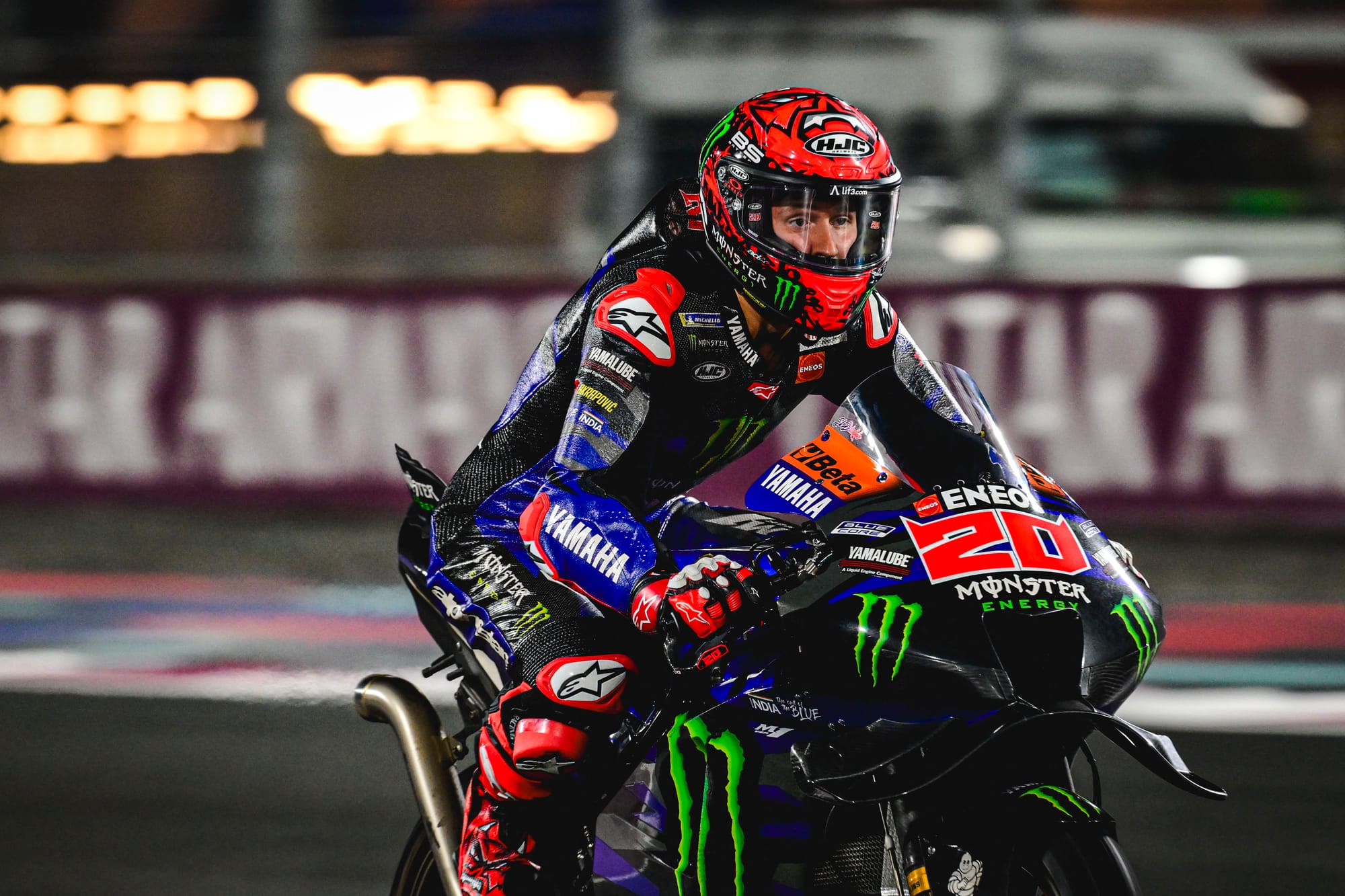For a manufacturer with a fantastic track record at Qatar's Lusail International Circuit, Ducati looked more vulnerable than expected coming into Sunday's grand prix - certainly more vulnerable than it had seemed at any point in the preceding two-day test.
And an on-the-grid admission from Gino Borsoi, the manager of the Pramac Ducati team that won the sprint with Jorge Martin, that the rear chatter issues Martin had been fearful of weren't cured - well, it only raised the stakes for Ducati's rivals. After all, Pecco Bagnaia and Enea Bastianini had similar troubles, and it was a problem that got worse with more laps on the tyre. So... go get 'em.
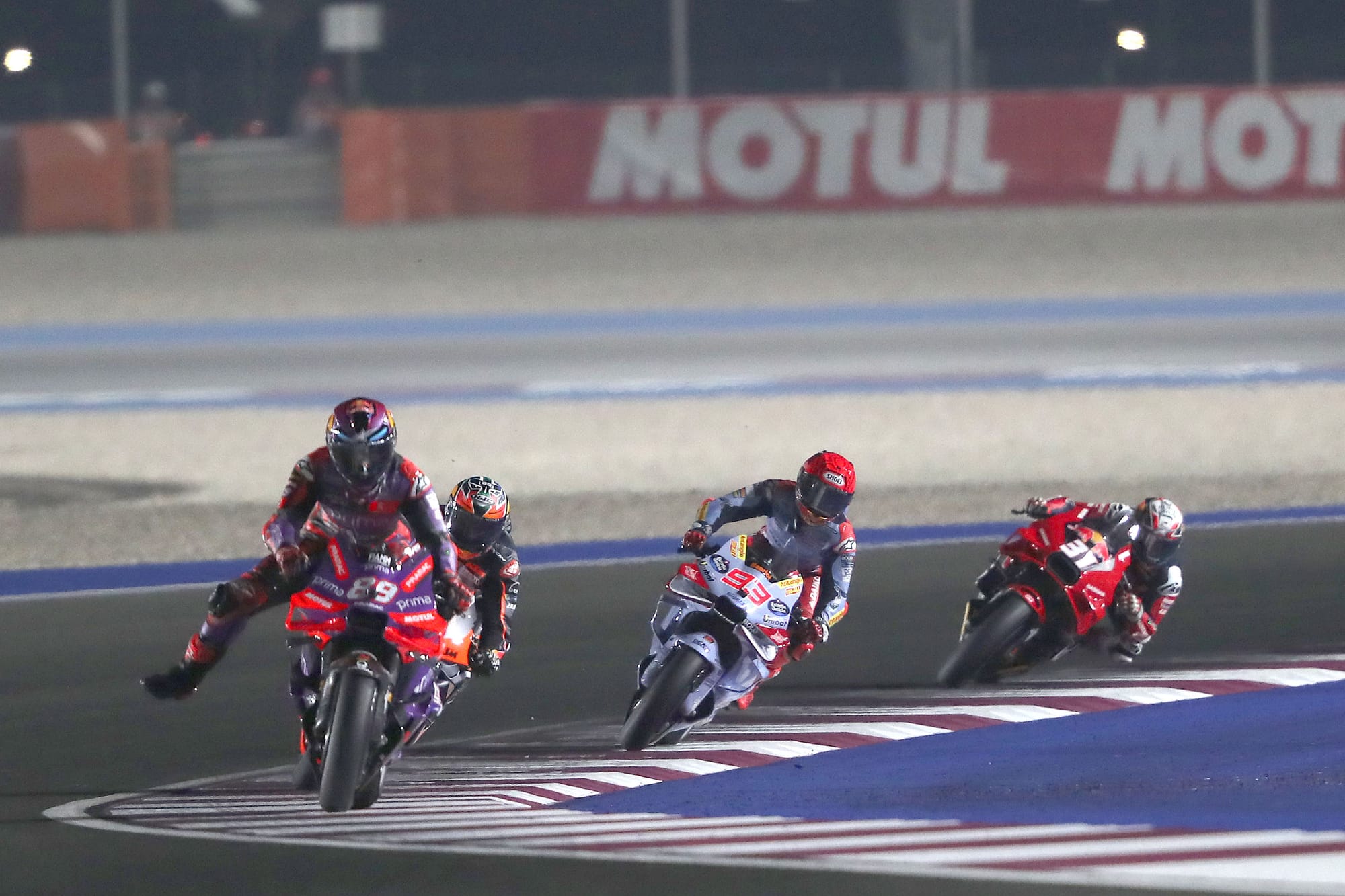
In the end, they didn't really 'get 'em'. Ducati finished with a 1-3-4-5-6-7, and Bagnaia was never under huge threat as far as the win was concerned.
But why did the expected challenges falter? There were two different reasons.
Why Espargaro couldn't do it
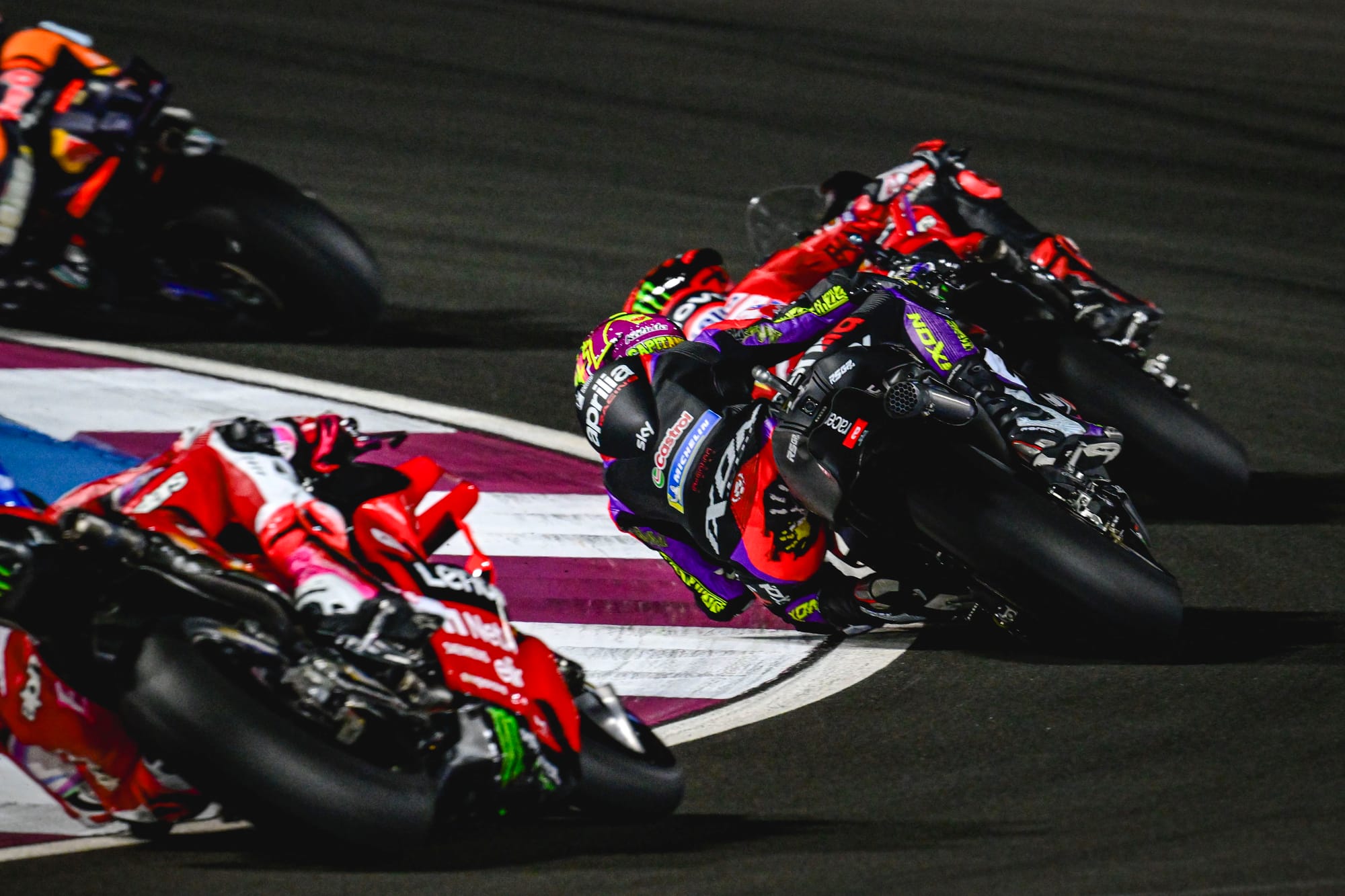
Aprilia rider Aleix Espargaro was widely tipped as having the late-race pace to basically leave everyone else in the dust. His long-run performance was already strong in the test and was backed up by him bearing down on the leaders in the sprint - which, had it been a full race, he would've surely won (he finished third).
But Espargaro was always up against it in that he would need to minimise the damage off the line.
The Aprilia generally cannot live with Ducati and KTM in terms of the launch. That had cost him already in the sprint, and though it was recoverable his was not a guaranteed recovery.
In the grand prix, he was down to fifth off the line - far from ideal, but salvageable. Then he was sixth. Then seventh. Then eighth. Then ninth. Then 10th.
Espargaro had worried about whether his RS-GP could live with the rival bikes in those early laps, when the tyres were at their freshest. But, in the end, it wasn't about that, he claimed.
"I had some problem with the rear tyre," said Espargaro, who ended up eighth. "From the warm-up lap I felt that the rear tyre was like ice. No traction at all.
"It was a nightmare all race. I couldn't accelerate, I couldn't lean. Nothing I could do.
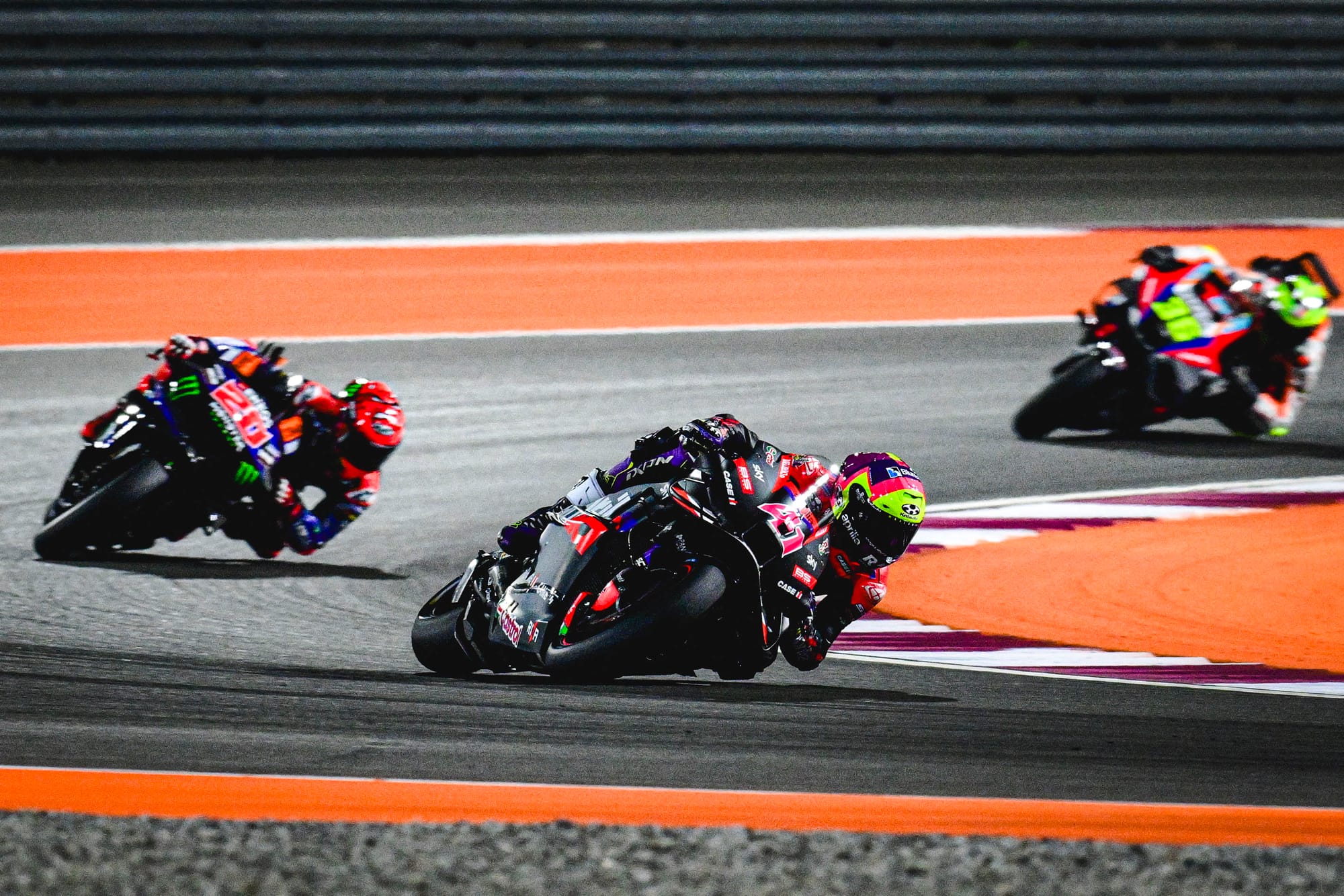
"Yesterday when I went to sleep I was 100% sure that I will win the race. But this is how I felt, you know, everything can happen.
"But the race was, yeah, a nightmare. I was extremely slow. 1m53s [laps] all the race, yesterday I did 1m52.8s in lap eight of the sprint. So, it was embarrassing."
At the same Lusail track where Martin claimed last year he had received a bad tyre from Michelin (before backtracking - and with Michelin saying it was unable to find fault with the rubber), Espargaro didn't quite go as far - but his remarks were quite pointed.
"It's not in my hands. We have to try to understand [whether there was an issue] with Michelin, with the team," he said.
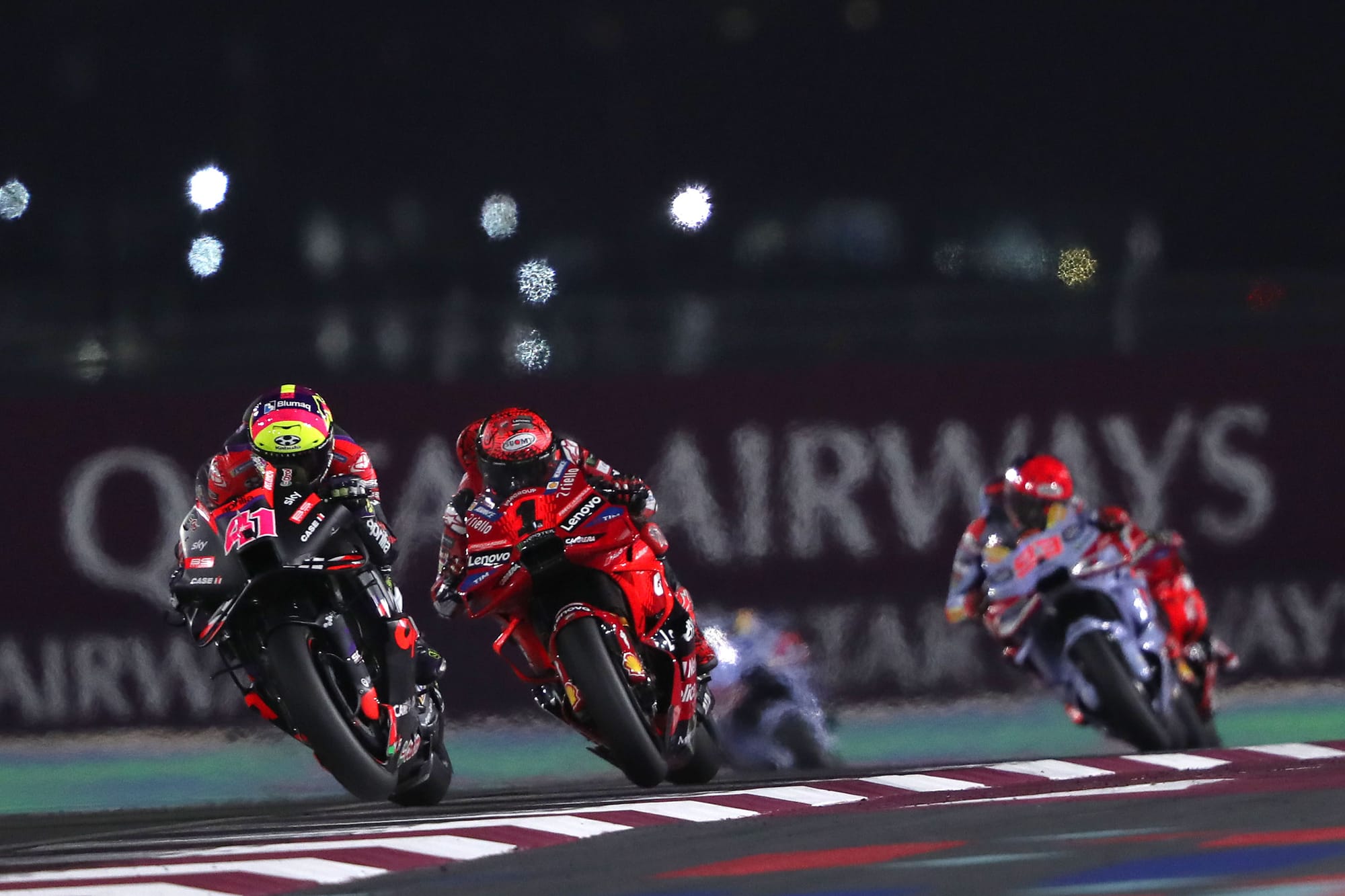
"Luckily - in the past was difficult, because you just had the long race, and they can say that you don't have speed. But with the race yesterday... yesterday I was very fast. And today I almost crashed in every corner. I was very lucky, sincerely, to finish in the top 10.
"I am not saying that I had a bad tyre but... the pace is there. You saw my race yesterday, you saw my race today."
Amusingly enough - even to Espargaro himself - this came just three days after he suggested that riders needed to "not blame Michelin as much" and that while many of his peers spoke like they got "three bad tyres every race", that barely ever happened to him.
"I don't know why I talked about the tyres!" he laughed on Sunday.
Why Binder couldn't do it
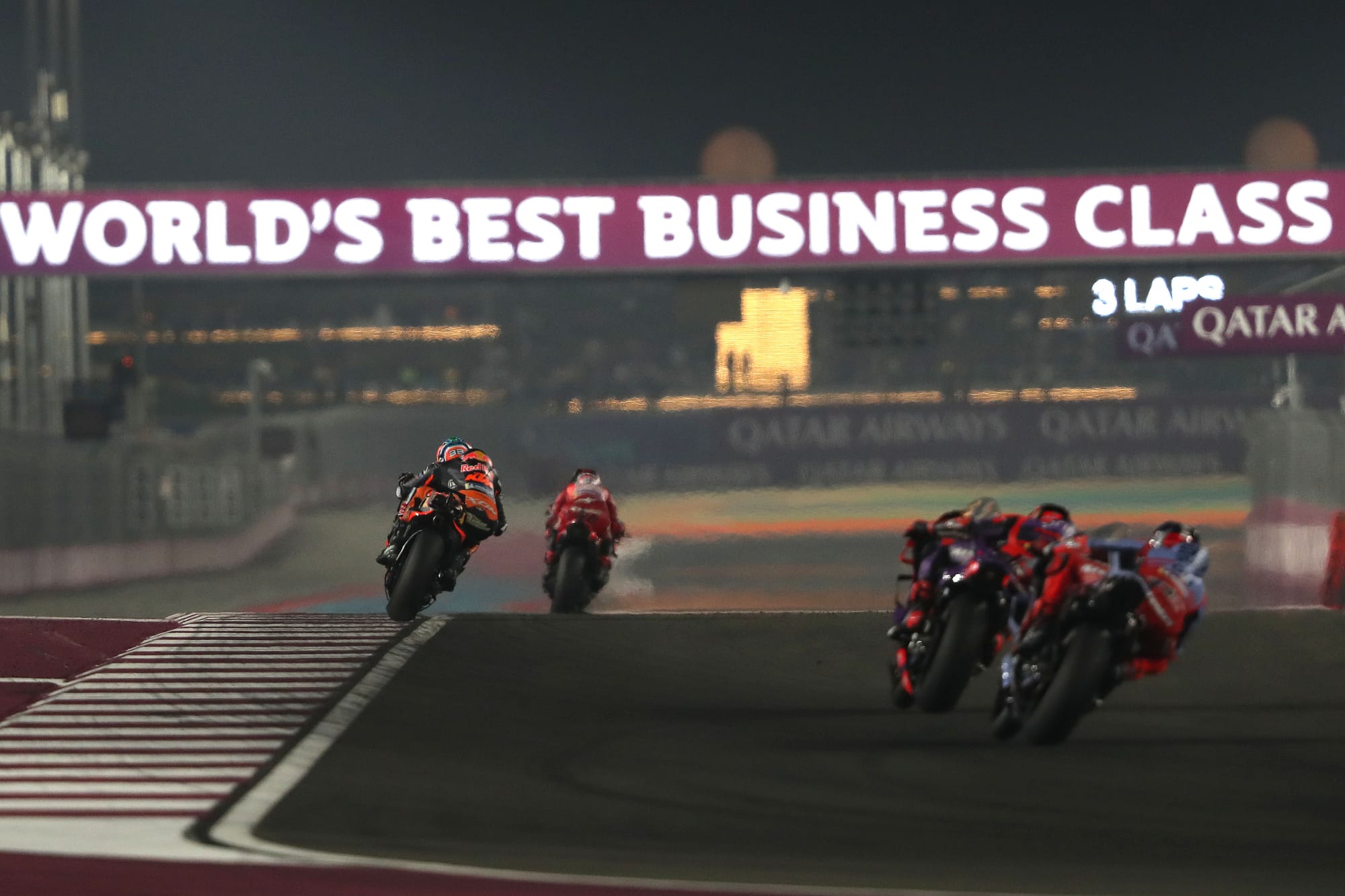
Here, the answer is simpler. Binder rode a great race for KTM - but he did not have that promised late-race pace advantage enjoyed by Espargaro. His tools, his strengths, were probably more similar to Ducati's.
He admitted to MotoGP.com after the race that his rear tyre had already been "polished" - heavily worn - by the end of the sprint, so like the Ducati riders he was going to have to pace himself a bit more.
And he did. There was some drop-off at the end of his race, but nothing like what he'd had in last year's grand prix.
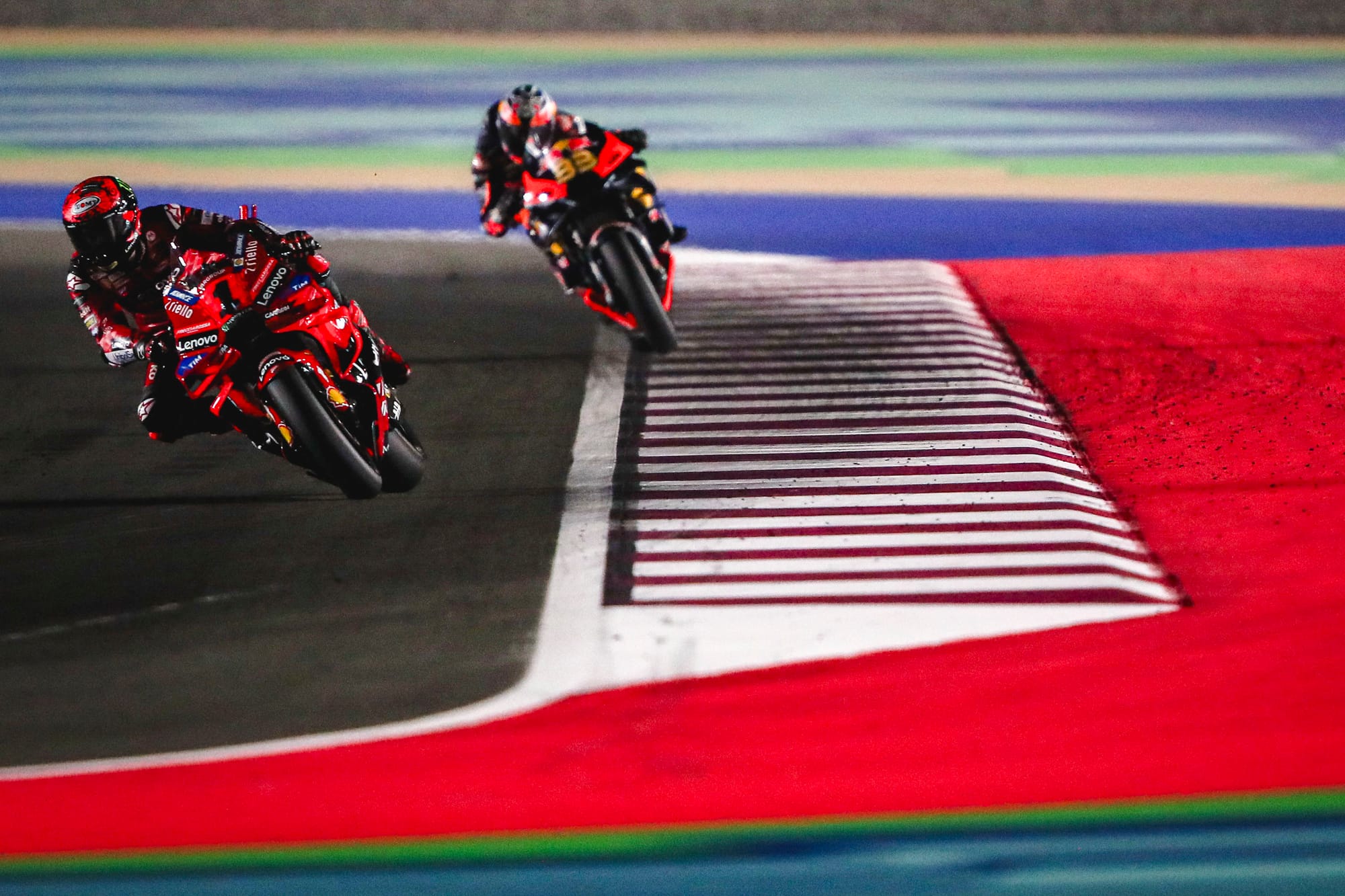
More than anything, he just got Bagnaia'd.
"Literally, I saw him deep once the entire race," said Binder of the race winner. "And by 'deep' I mean probably like one metre further than you should be.
"So... he did a good job. 100%. I've raced with him a lot over the last couple of years, and that's one of his strengths - he can go to the front, be consistent."
The other Ducati frontrunners - Martin and Bastianini - were rueful at the end of the race that they hadn't gone hard enough early enough, informed by that joint problem in the sprint.
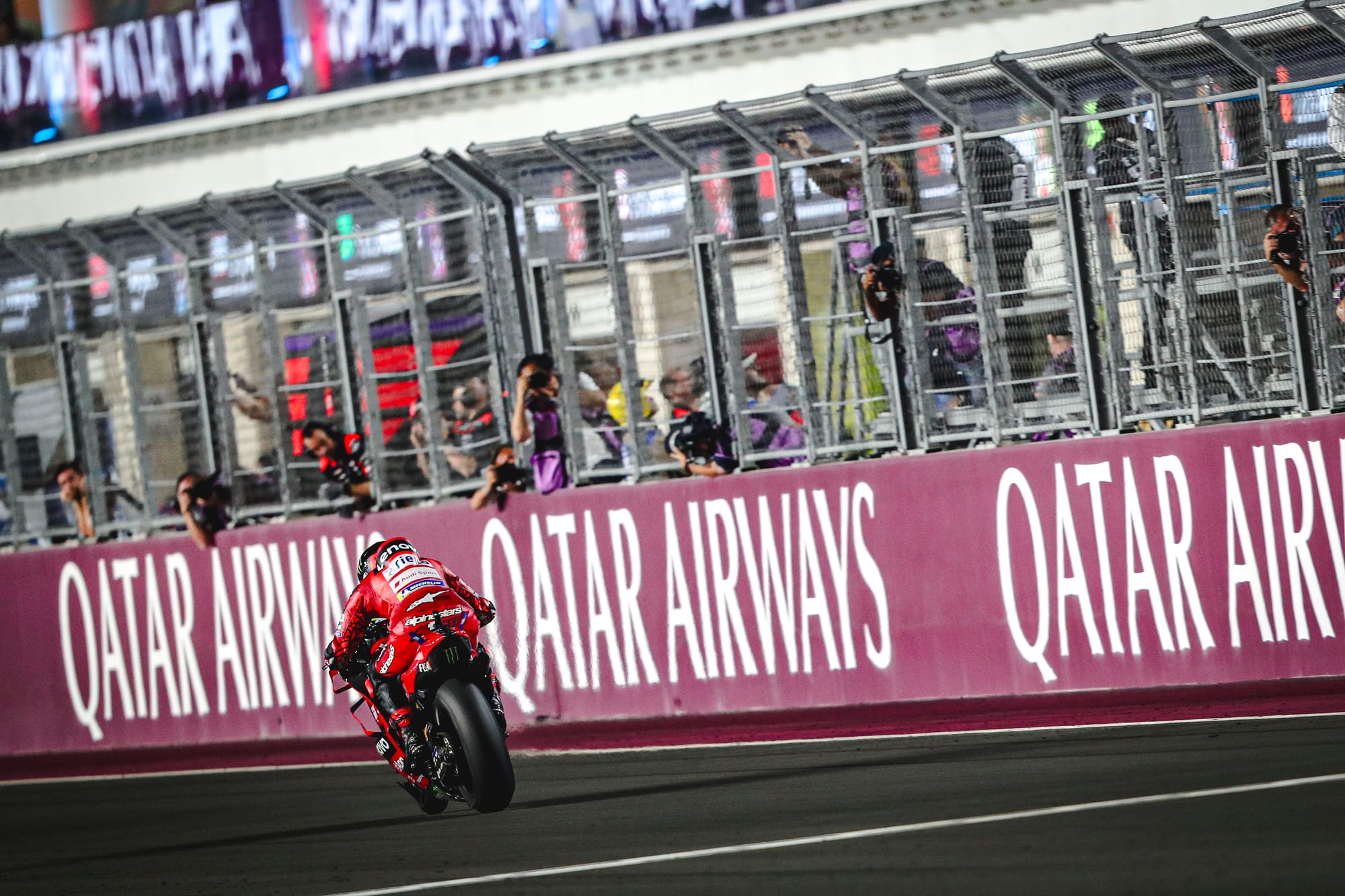
But Bagnaia had no qualms about striking early. He made his race on lap one, picking off Binder at Turn 2 and Martin at Turn 4. And he then had the confidence to keep all of his pursuers at arm's length knowing he wasn't at real risk at dropping off the pace cliff.
Bagnaia said this was because of the lessons he'd picked up from the sprint. There was a set-up tweak, and he also rode "in the opposite way". He didn't elaborate on that too much, but the basic gist of it was this: he had been trying to ride the same way as in the test, with all the rubber on track from the hundreds of laps, but it wasn't working for longevity - and just going a bit "smoother" was the solution.
So the rear chatter? He "just had a bit in the last two laps, in just one corner".
And the pace, as Binder rightly observed, was metronomic, with an average lap-to-lap change of around a tenth and a half.
Bagnaia's race laptimes
Excluding lap one
1m52.6s - 1 lap
1m52.7s - 2 laps
1m52.8s - 4 laps
1m52.9s - 3 laps
1m53.0s - 3 laps
1m53.1s - 6 laps
1m53.3s - 1 lap
In total, all but the first and the final lap of Bagnaia's race fit in between 1m52.667s and 1m53.170s.
Ducati wasn't really unbeatable in Qatar - Binder's second place ahead of five of them attests to that.
Bagnaia was just too good to be beaten.

